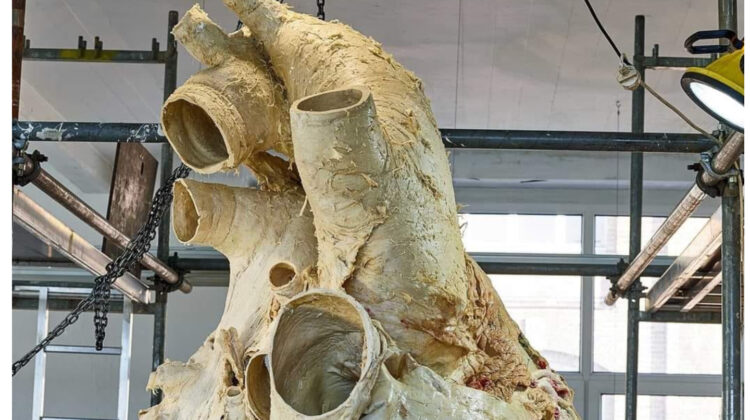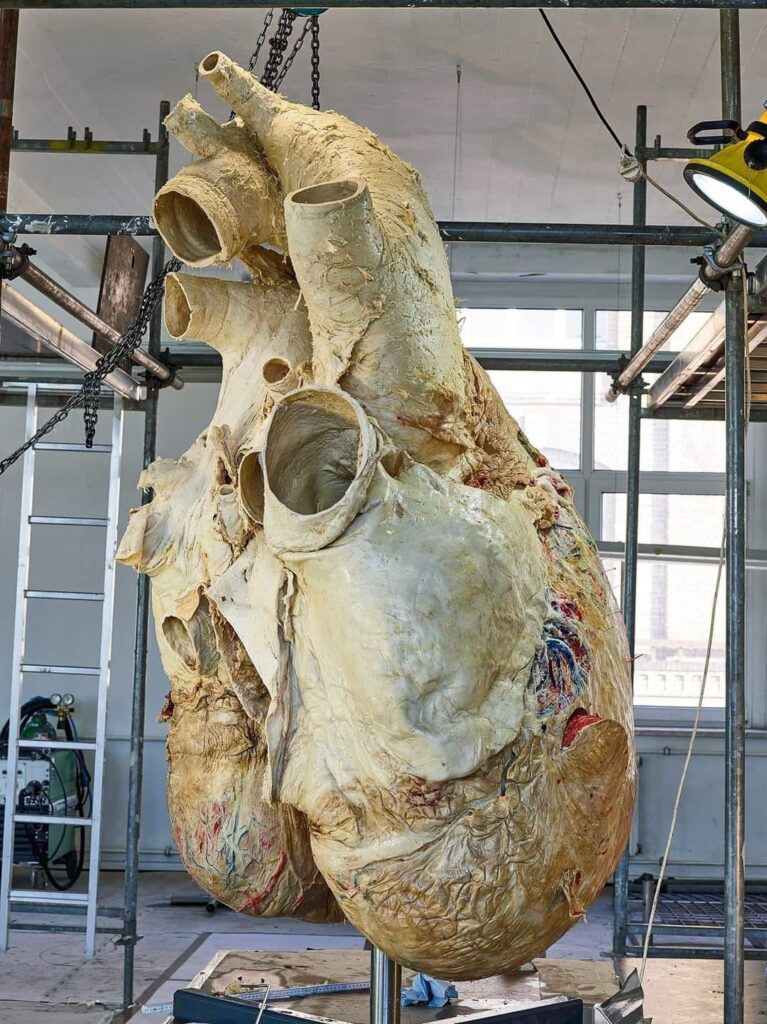
When a blue whale washed up in Newfoundland in 2014, Jacqueline Miller launched into action.
WHEN A WHALE dies, it becomes a rotting feast for birds and sharks. If it ever happens to reach shore, it’ll likely be in terrible shape. Lucky for mammalogy technicians at the Royal Ontario Museum in Toronto, a blue whale that washed up in Newfoundland in 2014 was in good enough condition that they were able to preserve its 440-pound ticker. “Its sheer size alone accelerates decomposition, so it’s remarkable we got to salvage a heart,” says Jacqueline Miller, who led the first-of-its-kind preservation effort. It recently went on display, and Miller gave us a deep dive into how to plastinate a leviathan organ.


1. Extract
Starting at the tail, 10 workers pull back strips of flesh with a hook and fillet the blubber and tissue into sections. Once they reach the heart, technicians sever the blood vessels; then they cut open the pericardial sac around the heart and push it out of the rib cage. The team is now knee-deep in decomposing guts. “It was like mud wrestling,” Miller says.
2. Dilate
Without blood, the heart flattens. So researchers insert hoses into two blood vessels and cork the rest with plungersand plastic bottles. They pump in more than 700 gallons of formaldehyde, which stiffens the muscles, stops decomposition, and makes the ticker balloon back up.
3. Ship
Technicians triple-wrap the wet organ in absorbent mats, forklift it into a padded steel tank, and dump in thousands of packing peanuts. Then the heart gets flown to Gubener Plastinate in Germany—the place that does the human displays for Body Worlds exhibitions.
4. Plastinate
German anatomists soak the heart in acetone, constantly changing out the fluid. Over six months, the acetone replaces all the water molecules in the tissue. Then the magic of plastination happens. Techs soak the heart in a silicone polymer solution andput it in a vacuum chamber. Atmospheric pressure drops to near-outer-space conditions, causing the acetone to bubble away and the polymer to take its place.
5. Cure
A gaseous curing agent hardens the silicone. After three months the heart comes out as a giant plastic glob, resistant to the hands of museumgoers ignoring the do not touch sign.

Leave a Reply